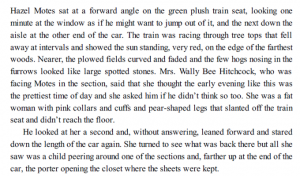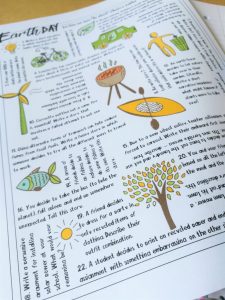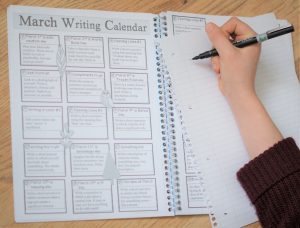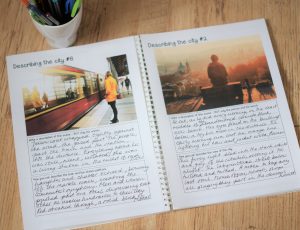5 ideas for better high school creative writing

Raymond Bradbury is reported to have said (among other things):

Over 20 years ago this advice was given to us – a gaggle of wet-behind-the-ears Creative Writing undergraduates. It seems rather contrived now: to carry about a notebook and chewed pencil end. But I do. The purpose then was to build fluency. Fluency in the practicality of writing, fluency in expression, voice, inspiration, and silence. “Building writers is like building a wall,” said one professor, “one sodding brick at a time.”
It would be gross exaggeration to say that I have followed Bradbury’s advice faithfully. But over the last 20 years I have filled some 15 notebooks and over a hundred pages online of writing.
When I was 20 years old, my writing voice was cynical, dark, and worrying. At 30 years old, the voice was hollow: falsely buoyant, darkly comic, restricted and curious. Now at 40, my writing voice is no more confident or certain, it is changing again. Bleak landscapes inhabited by warm-hearted individuals; pain moulded relationships living in richly symbolic environments. My writing has shifted in style too, sometimes daily it seems. Laboriously dense description. Then sparse. And every shade between.
Every time I sit down to write (honestly now perhaps 3 or 4 times a week) I start with anxiety. What shall I write about? How will I start? The waiting and the silence are hard task masters. Only with years have I realised these moments are also part of the process. So I feel great empathy for the students I teach who struggle with the ‘what’ and ‘how’ of writing.
Like so many things in English – we as teachers are often the jack-of-all-trades, and while I don’t necessarily want to use the word ‘master’, I must confess that even with over 20 years of writing, a degree and a Masters in it – I still don’t feel well qualified to teach it in the classroom.
Teaching writing means so many things…
Handwriting. Spelling. Grammar. Punctuation. Sentence openers. Techniques. Sentence length.
It is this multiplicity of outcomes that I think has inaccurately shifted the spotlight of emphasis onto the technicalities of writing, rather than the what of writing.
So this year, we have been giving students the opportunity to write more.
Here’s what it looks like:
1. Use Mentor Texts
A short exemplar of either narrative voice; setting; character; dialogue; action (etc). I rotate focus and style for variety’s sake.
This is the ‘read more’ bit of Bradbury’s advice. We have a huge collection of mini-exemplars available for any and every purpose.

The above is the opening of Flannery O’Connor’s Wise Blood – we use this with nearly every year group.
2. Simple prompts
A simple instruction that focuses on who the narrative voice is and what the content is:

3. Free writing
At first we do two minutes, then 4, then 5. We alternate these depending on what else we are covering in a lesson. These writing moments are not designed to create polished writing. The purpose is to ask students to write often, write variety and to write freely.

4. Use a Writing Calendar
We do this daily (if possible) sometimes in class, sometimes at home. I have started generating Writing Calendars for students and colleagues who want to write every day. More, more, more writing is the point.

5. Spit and polish
At the end of a particular session of writing (perhaps 3 lessons, perhaps 6) students then choose which piece they would like to develop. The word ‘develop’ here is significant for me. It would be very easy to use the word ‘improve’ but improvements often imply a prescriptive success criteria that requires students to write more like Dickens and less like Hemingway.

So we return again to narrative voice and style – who is this person telling this story? What is important to them? What do they need the reader to know, to feel, to think?
We ask:
- How does this person think and speak?
Unless they are Victorian then we don’t need to sound like Henry James; we then go back to our exemplars and find example of one that is closest in style. - How quickly is the drama or action unfolding?
This will often shape the sentence length and sentence structure used. - What is the most important detail?
This is the focus for descriptive techniques – here is often when I give my one restricting instruction. Just one technique* allowed in this piece of writing.
Choose it well. Plan it well. Use it well.

* As a side note here, I tend not to encourage the use of poetic techniques in prose writing (alliteration, onomatopoeia etc). We teach personification (and pathetic fallacy) and extended metaphor.

If you are interested in the daily writing calendars they can be found on TPT here.
Love teaching creative writing!
Each week I send out a creative writing - ready for you to use in your classroom. Sign up to receive these weekly emails and in addition I will send you tips, tricks, ideas, and offers!

